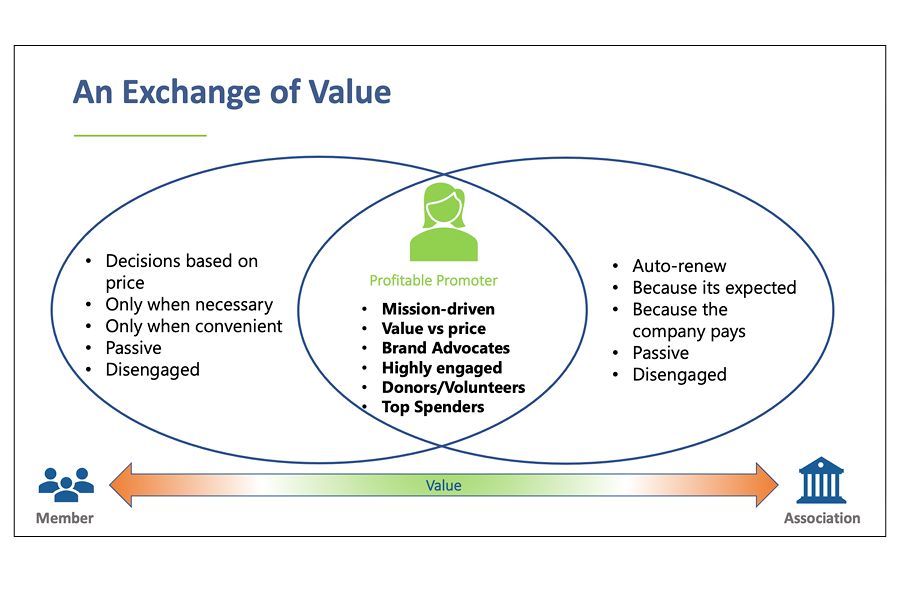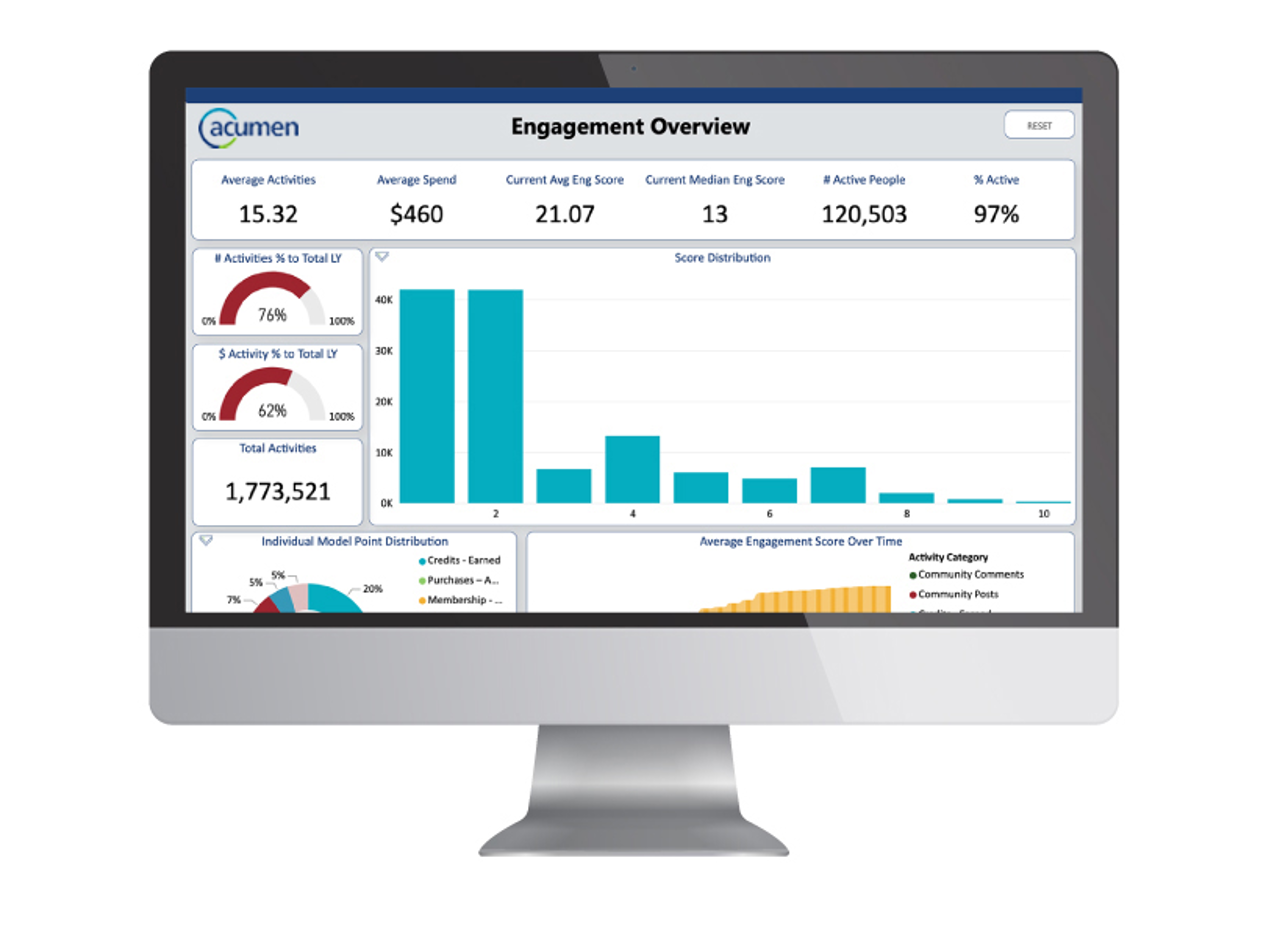According to Marketing General Incorporated’s 2021 Marketing Benchmarking Report, 50% of associations surveyed believe lack of engagement is the top reason members didn’t renew. Yikes!
Because engagement is critical to retaining members, many associations are using a member engagement score to track and build loyalty. In case you aren’t familiar with a member engagement score, here’s a quick overview: it’s an analysis to assess member and customer behavior over a certain period of time (we recommend 3 years). A number or “score” is assigned to a member based on how they interact with your association, e.g., attend meetings, take classes, participate in your community, volunteer, read your content.
First, let’s talk about what engagement is.
Think of engagement as something that illustrates an exchange of value. The best relationships occur when there is an even exchange of value between you and your members. Here we find members who believe in your mission, are loyal, highly engaged and are likely to be top spenders.
Next, let’s talk about how to use engagement scores to guide your members.
Start by looking at your data from a wide lens.
As you look at the data in aggregate, do so for both members and non-members to get a big picture of engagement behavior. Use your data to find out how your customers interact with the organization and how it changes over time, which can help you understand member journeys.
Engagement data over time can help you identify tipping points – points where there are noticeable changes in engagement behavior. Understanding the tipping points and which behaviors lead to them allows you to take deliberate actions to encourage more engagement and build customer loyalty.
For example, most associations find members don’t volunteer or donate before they have seen value from other activities like courses or publications. If you can identify where they are in their journey, you can serve them the most relevant marketing messages at the right time to point them towards the next tipping point.
Tipping points can include:
- Acquisition – when people move from interacting with your content to actually joining your association. At this stage, they typically engage in basic membership activities (e.g., opening mails, visiting the website, starting to earn credits)
- Early Engagement – at this point you will see certain activities that point towards Profitable Promoter behavior. For example, earning credits or making purchases surpasses their website visits or membership activities
- Loyalty – as they become more engaged and committed, they are now taking steps like volunteering, donating, mentoring and posting in the community chats.
Keep in mind that the journey takes place in a particular order, but not necessarily in a defined sequence of time. Some people will go through their journeys much quicker than others. In addition to looking at the journey over time, look at it by segments. Different types of members engage in different ways. This will help you hone your value proposition per member segment.
Identify where specific people are on their journey.
By finding members at the right time in their journey, you can increase your likelihood of identifying candidates who are ready to engage in activities like speaking at your conference or serving on a committee. This can be helpful for associations looking to diversify their committees by finding people likely to serve, but not yet having done so. Other roles this can help you pinpoint include:
- Buyers
- Attendees
- Speakers
- Donors
- Award Nominees
- Leaders
- Volunteers
- Promoters
- Influencers
- Experts/Thought Leaders
Create an engagement journey that identifies the path to becoming a connected member.
Start by overlaying a commitment journey with activities. The activities should be defined by what you care about: purchases, taking courses, making donations, participating in the community, volunteering. It is important to understand the journey and how people move through it over time. This will help you Identify trends and see when your members move through their journey from initially joining to being fully connected.
Thinking in these terms can help you provide members with guidance — or a “nudge” — rather than explicitly telling them what they must do next. Remember, people take their journey on their own time. Give your members their own individual compass and point them in the right direction – that’s often all it takes.
Key Takeaways
- Start scoring member engagement today! If you have a tool, use it…even if it’s just Excel or your Association Management Software. Pro Tip – track your engagement across all platforms.
- Use aggregate scores to validate and improve member value. This will help you answer the questions, “Are we on the right track?” “Are we doing better at engagement over time?”
- Utilize individual scores to segment your messaging and communications. Target members with specific messaging to increase CTAs and to give your members a “nudge” at the right time.
- Identify where members are in their journey to help optimize your marketing and ultimately improve engagement, retention, loyalty and a sustainable membership pipeline that can be converted to active members
- The easiest and best way to leverage your engagement scores in meaningful ways is to bring all of your data together in one place to visualize, analyze and take action. That’s why we built our data analytics platform, Acumen, specifically to help associations do just that.
Schedule a demo with one of our data-loving experts to learn more or check out our recent webinar that will walk you through how to get the most out of your member engagement score.





